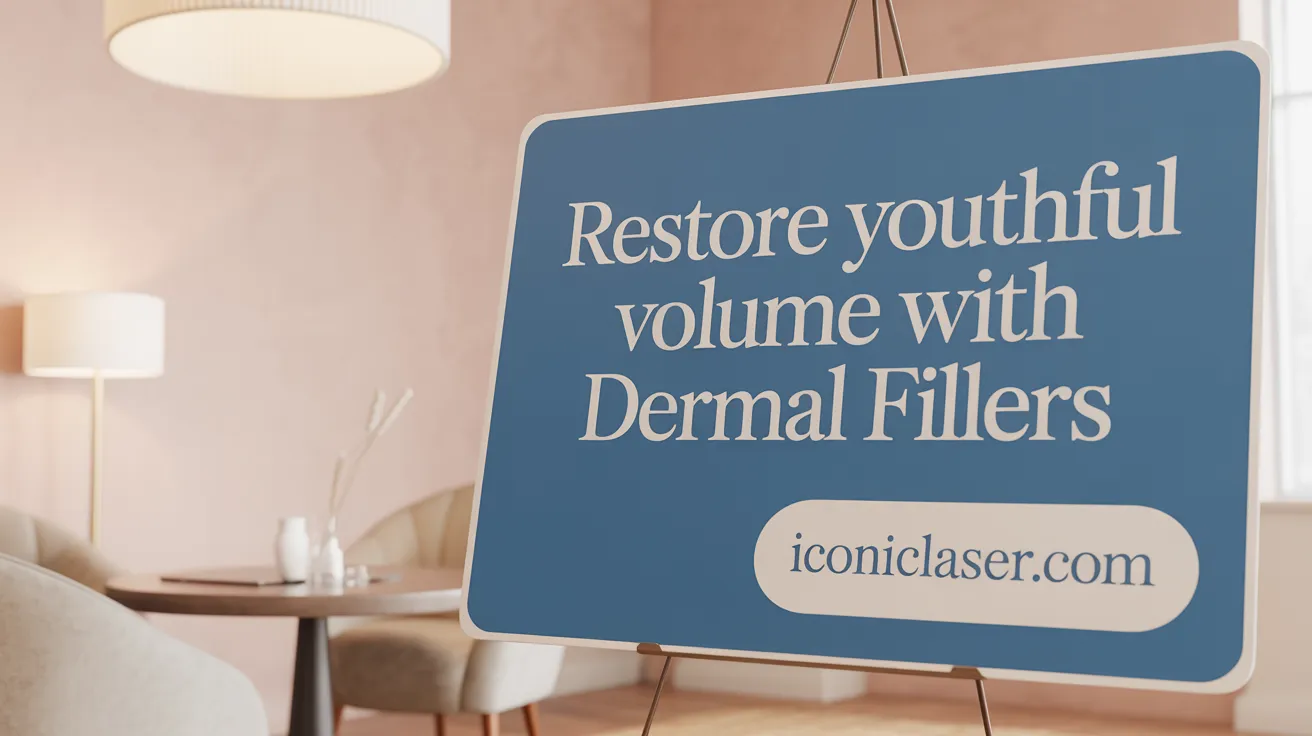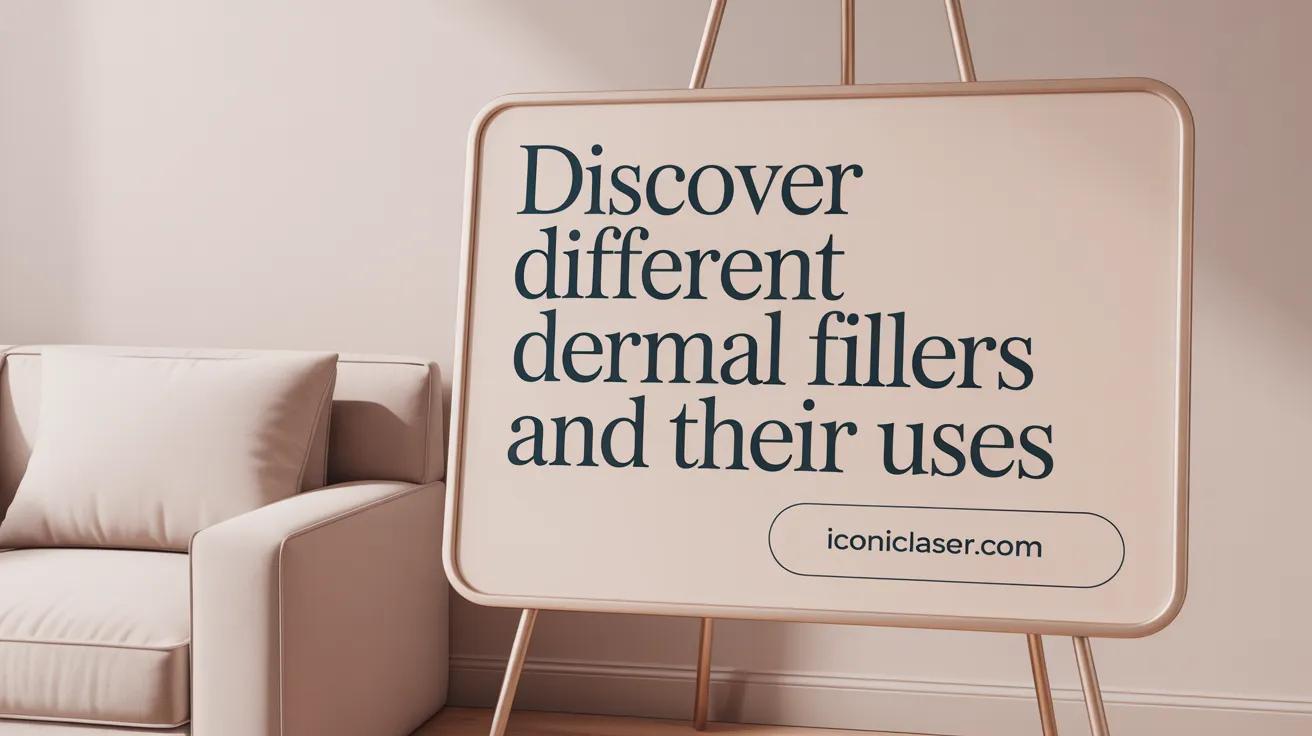An Overview of Injectable Aesthetic Treatments
Injectable aesthetic treatments have become a cornerstone of non-surgical facial rejuvenation, offering versatile solutions to the signs of aging and enhancing natural beauty with minimal downtime. These treatments range from neuromodulators that relax facial muscles to various types of dermal fillers that restore volume, smooth wrinkles, and contour facial features. Understanding the different injectable options, their mechanisms, benefits, potential risks, and suitability is essential for anyone considering these popular cosmetic procedures. This article delves into the types of injectable treatments available today, providing a comprehensive guide for informed decisions and optimal results.
Neuromodulators: Relaxing Muscles to Soften Dynamic Wrinkles

What are neuromodulators and how do they work?
Neuromodulators are injectable substances derived from botulinum toxin type A designed to temporarily relax specific facial muscles. By blocking nerve impulses to these muscles, they prevent muscle contractions that cause dynamic wrinkles, which are the lines forming from facial expressions like frowning or squinting.
Which neuromodulator products are commonly used?
Popular FDA-approved cosmetic injectables include Botox®, Dysport®, Xeomin®, Jeuveau®, and the newer Daxxify neuromodulator. These products vary slightly in how quickly they work, how long their effects last, and how they spread in the treated area. Notably, Daxxify® can provide effects that last six months or more, longer than many traditional options.
What areas can neuromodulators treat?
Neuromodulators commonly target dynamic wrinkles such as those found on the forehead, the frown lines between the eyebrows (glabellar lines), crow’s feet around the eyes, and bunny lines on the nose. Beyond cosmetic uses, they are also employed medically to treat conditions like excessive sweating (hyperhidrosis), migraines, and muscle spasms. Learn more about botulinum toxin uses and cosmetic injectables.
How long do neuromodulator effects last and what are common side effects?
Results from neuromodulator treatments typically become visible within 3 to 7 days after injection and last approximately 3 to 6 months. Common side effects are usually mild and may include redness, swelling, or bruising at the injection site. Occasionally, temporary muscle weakness or eyelid drooping occurs, along with headache. See details on botulinum toxin side effects and safety.
Why is professional administration critical for neuromodulators?
Because neuromodulators influence muscle activity, precise injection and correct dosing are crucial. Only qualified, board-certified providers with thorough knowledge of facial anatomy can ensure natural-looking results and minimize risks such as asymmetry or unwanted muscle paralysis. Professional administration is vital for safety and treatment effectiveness.
Dermal Fillers: Restoring Volume and Enhancing Facial Contours

What are dermal fillers and what do they do?
[Injectable Dermal Fillers Guide] are gel-like substances injected beneath the skin to restore lost volume, smooth static wrinkles, plump facial features, and enhance natural contours. They address aging signs such as sunken cheeks, lips, and deep facial lines to rejuvenate the face without surgery.
What are the common substances used in dermal fillers?
Several substances are commonly used to make dermal fillers:
- [Hyaluronic Acid Fillers: Found in brands like Juvéderm®] and Restylane®], HA fillers are soft, gel-like, and naturally occur in the body, helping to hydrate and volumize skin.
- Calcium Hydroxylapatite (CaHA): Used in Radiesse®], this mineral-like compound stimulates collagen and is suited for deeper lines.
- Poly-L-lactic Acid (PLLA) fillers: Present in Sculptra®], PLLA promotes collagen production gradually improving volume over months.
- Polymethylmethacrylate (PMMA) fillers: Found in Bellafill®], it contains microspheres that provide long-term support.
- Autologous Fat Injections]: Fat is harvested from the patient's body and injected back into the face, offering natural, long-lasting volume restoration.
Which facial areas are typically treated with fillers?
Dermal fillers are versatile and treat multiple facial zones including:
- Cheeks and temples to restore volume loss
- Lips for plumping and smoothing vertical lines
- Nasolabial folds and marionette lines to diminish wrinkles
- Chin creases and jawline for contour improvement
- Under-eyes for hollowness
- Backs of the hands to rejuvenate skin texture and volume
How long do fillers last and what factors influence longevity?
The duration of filler effects varies by type:
- Hyaluronic Acid fillers]: Last 6 to 18 months depending on product and area treated.
- Calcium Hydroxylapatite (CaHA) fillers]: Generally last about 12 months and stimulate collagen.
- Poly-L-lactic Acid (PLLA) fillers]: Effects can last two years or more with gradual volume enhancement.
- Polymethylmethacrylate (PMMA) fillers]: Offer semi-permanent to permanent results lasting several years.
- Fat injections]: Longevity is unpredictable, potentially lasting many years but require surgical harvesting.
Longevity depends on filler composition, injection depth, facial movement, and individual metabolism.
What are the benefits and risks associated with dermal fillers?
Benefits include instant volume restoration, smoothing of wrinkles, improved facial symmetry, and minimal downtime. They provide a non-surgical option to combat signs of aging with customizable results. See more under [Benefits of Dermal Fillers].
Risks include common side effects like bruising, swelling, redness, and mild pain at injection sites. Rare serious complications include allergic reactions, infection, lumps or nodules formation, and vascular occlusion which can lead to tissue necrosis or vision impairment. Detailed safety information is available at Dermal Filler Side Effects and Safety] and [Complications of Injectables]. Choosing an experienced, board-certified provider] significantly reduces risks and ensures natural, safe outcomes.
Comparing Neuromodulators and Dermal Fillers: Uses, Effects and Safety

What are the main differences between neuromodulators like Botox and dermal fillers?
Neuromodulators such as Botox work by relaxing specific facial muscles, which helps reduce dynamic wrinkles caused by movement—like forehead lines and crow’s feet. In contrast, dermal fillers add volume beneath the skin to restore fullness. They primarily target static wrinkles visible without expression and enhance facial contours such as cheeks, lips, and the chin.
Which types of wrinkles and areas are treated by each?
- Neuromodulators (Botox): Target dynamic wrinkles formed by muscle contractions. Common areas include the forehead, glabellar lines (between the brows), and crow’s feet around the eyes.
- Dermal Fillers: Address static wrinkles, fill volume loss, and improve contours. Typical treatment zones include cheeks, nasolabial folds, lip lines, chin creases, and under-eye hollows.
How do the duration and cost of treatments compare?
| Treatment | Duration | Typical Cost per Session | Additional Details |
|---|---|---|---|
| Botox | 3 to 6 months | $400 to $528 | Requires regular maintenance |
| Dermal Fillers | 6 months to 2+ years | $500 to $1000+ per syringe | Longevity depends on filler type, including Poly-L-lactic Acid (PLLA) fillers and Polymethylmethacrylate (PMMA) fillers |
Botox effects usually last several months and need repeat treatments to maintain. Fillers provide longer-lasting volume restoration but vary based on the product used.
Are combination treatments used?
Yes, combining Botox and dermal fillers is common practice. This approach targets different facial aging signs: neuromodulators relax muscles to soften expression lines, while fillers restore lost volume and smooth static wrinkles. Together, they achieve balanced, natural-looking rejuvenation.
What are the safety considerations for both treatments?
Both neuromodulators and dermal fillers are considered safe when administered by licensed, board-certified providers skilled in facial anatomy. Common side effects include bruising, swelling, and tenderness. Neuromodulators may cause temporary muscle weakness, while fillers carry rare risks such as tissue necrosis or vision problems if injected incorrectly. Proper technique and provider expertise are critical to minimize complications.
Understanding the Variety of Dermal Fillers: Characteristics and Applications

What are the different types of dermal fillers and their characteristics?
Dermal fillers are classified based on how long they last in the skin: temporary, semipermanent, and permanent. Temporary fillers, like hyaluronic acid (HA) fillers, are soft and gel-like, providing volume that the body gradually absorbs. Semipermanent fillers include calcium hydroxylapatite (CaHA) fillers and Poly-L-lactic Acid (PLLA) fillers, which stimulate natural collagen production for longer-lasting effects. Permanent fillers such as Polymethylmethacrylate (PMMA) fillers contain microspheres that provide lasting structural support.
What are examples of popular filler brands and their uses?
Common HA fillers include Juvéderm®, Restylane®, Belotero, and Revanesse, used chiefly for lip enhancement, wrinkle smoothing, and volume restoration across various facial areas. Radiesse® represents CaHA-based fillers, targeting deeper wrinkles and offering a collagen boost. The PLLA product Sculptra® encourages gradual collagen growth, improving volume over time, mainly suitable for significant facial volume loss. For longer-term correction of smile lines and scars, Bellafill® (PMMA-based) offers a semi-permanent alternative.
How do these fillers differ in their effects on collagen?
While HA fillers provide immediate improvement in volume and skin hydration, CaHA and PLLA fillers function differently. They act as biostimulators, encouraging the body’s natural collagen synthesis, which results in more prolonged, natural rejuvenation effects as collagen builds up over several months.
Which facial areas are best suited for each filler type?
HA fillers are versatile and commonly used in delicate and varied regions like lips, under-eye hollows, cheeks, and nasolabial folds. CaHA fillers excel at treating deeper wrinkles and can also rejuvenate aging hands. PLLA is favored for severe volume loss such as sunken cheeks and broader facial contouring. PMMA fillers serve well for medium to deep wrinkles and scar corrections where lasting volume is desired.
What is the range of duration among filler types?
The longevity of fillers varies: HA fillers typically last between 6 and 18 months, CaHA fillers last around 12 months or slightly more, PLLA results develop gradually and can persist for 2 years or longer after multiple treatments, and PMMA fillers offer effects lasting up to 5 years or potentially permanent.
| Filler Type | Common Brands | Primary Uses | Duration |
|---|---|---|---|
| Hyaluronic Acid (HA) | Juvéderm, Restylane | Lips, cheeks, nasolabial folds, under-eyes | 6–18 months |
| Calcium Hydroxylapatite (CaHA) | Radiesse | Deeper wrinkles, hand rejuvenation | ~12 months |
| Poly-L-lactic Acid (PLLA) | Sculptra | Severe volume loss, facial contouring | 2+ years |
| Polymethylmethacrylate (PMMA) | Bellafill | Medium/deep wrinkles, scars | Up to 5 years+ |
Autologous Fat Injections: A Natural Yet Surgical Option
What are autologous fat injections and how are they performed?
Autologous Fat Injections entail removing fat from the patient's body—commonly from areas like the abdomen or thighs—using liposuction. This fat is then processed and carefully injected beneath the facial skin to restore volume, smooth lines, and improve contours. Unlike synthetic dermal fillers, fat grafting is a minor surgical procedure requiring anesthesia and specialized technique.
What are the advantages of fat injections?
Fat injections offer several benefits over synthetic fillers. The material is entirely natural and biocompatible since it is sourced from the patient’s own body, significantly reducing risks of allergic reaction. Some of the transplanted fat cells may establish a permanent presence, leading to longer-lasting or even indefinite volume restoration. Additionally, fat contains stem cells that may contribute to improved skin texture and quality.
How does fat grafting compare with synthetic dermal fillers?
While synthetic fillers provide a convenient, minimally invasive option with predictable and immediate results, fat grafting requires a surgical procedure, increasing cost, recovery time, and procedural complexity. Fat survival rates can vary, causing some unpredictability in final outcomes. However, fat injections avoid introducing foreign synthetic substances, appealing to patients seeking a natural approach to facial rejuvenation.
What are the risks and recovery involved?
This technique carries typical surgical risks such as infection, bruising, swelling, and discomfort at both the donor and injection sites. Anesthesia is necessary during fat harvesting, and patients should expect around two weeks of recovery, during which time swelling and bruising gradually subside.
Who are suitable candidates for fat injections?
Ideal candidates are individuals desiring long-lasting volume restoration and are amenable to undergoing a minor surgical procedure. It is also essential that patients have adequate fat in donor sites to harvest for grafting. A thorough consultation with a qualified provider will assess candidacy based on these factors.
Safety, Complications, and Choosing the Right Provider
What are the common complications and risks associated with injectable treatments?
Injectable treatments can cause side effects like bruising, swelling, pain, lumps, and asymmetry. Infection or allergic reactions may also occur. Rare but serious risks include vascular occlusion, which can block blood flow leading to tissue necrosis, blindness, or stroke. The likelihood of complications varies depending on the product used and the injection technique. For detailed safety information, see Common complications from injectables and safety measures and Dermal fillers risks and safety.
Why is knowledge of facial anatomy critical for safe injections?
A deep understanding of facial anatomy is crucial for safe and effective injections. Providers must know the locations of blood vessels, muscles, and skin thickness to avoid injecting fillers into vessels or affecting unintended muscles with neuromodulators. This expertise helps prevent serious complications and ensures natural, balanced results. Learn more about Facial anatomy and safe injection techniques and Choosing qualified providers with facial anatomy knowledge.
What dangers are posed by unregulated products and untrained injectors?
Using unregulated products exposes patients to counterfeit or contaminated substances, raising risks of severe infections and adverse reactions. Inexperienced injectors may employ incorrect techniques, leading to poor cosmetic outcomes, permanent disfigurement, or life-threatening complications such as tissue damage or vision loss. Refer to Dangers of unregulated cosmetic treatments and Risks from unsafe injectors and counterfeit products for more details.
How should patients select qualified providers?
Patients are advised to choose board-certified facial or cosmetic surgeons or medical professionals with specialized injectable training. Verifying credentials, examining before-and-after photos, reading patient reviews, and confirming the use of FDA-approved products from authorized sources are essential steps for safety and satisfactory outcomes. Guidance is available in Choosing a qualified provider for injectable treatments and Benefits of board-certified cosmetic surgeons.
What aftercare and patient education are important?
Clear patient education includes instructions to manage minor side effects like bruising and swelling, recognizing early signs of serious complications, and understanding when to seek urgent medical care. Setting realistic expectations about treatment effects and maintenance, as well as post-procedure care, supports patient safety and satisfaction. For comprehensive patient guidance, see Dermal filler aftercare and patient education and Filler injection preparation and side effects.
Emerging Trends and Advanced Techniques in Injectable Aesthetics

What are recent developments in neuromodulator formulations?
Innovations in neuromodulators have introduced products like Daxxify neuromodulator, which offers an extended duration of effects lasting up to six to nine months thanks to a proprietary peptide stabilizer. Jeuveau® is designed for faster onset of action, making treatments feel more immediate. These advancements provide patients with longer-lasting results and potentially more comfortable treatment experiences compared to traditional products.
What advancements have been made in filler technology?
New filler technologies focus on improved naturalness and longevity. Bio-identical hyaluronic acid fillers, such as the RHA collection, mimic the elasticity of natural skin for seamless integration. Additionally, many fillers now contain lidocaine to reduce injection discomfort. Biostimulatory fillers like Sculptra® (Poly-L-lactic Acid (PLLA) fillers stimulate the body's collagen production, offering gradual, long-lasting rejuvenation effects that look natural over time.
How do combination and layering techniques improve outcomes?
Experienced injectors employ layering techniques by placing different types of fillers at various skin depths tailored to individual anatomy. Combining dermal fillers with neuromodulators allows simultaneous restoration of volume and control of dynamic wrinkles. This approach ensures harmonious, natural-looking facial contours while minimizing side effects and downtime.
Are there technological aids in planning injectable treatments?
Digital imaging and three-dimensional facial analysis tools have become integral to treatment planning. They enable practitioners to map precise injection sites, assess facial symmetry, and simulate outcomes. These technological aids enhance safety, improve predictability of results, and increase patient satisfaction by allowing tailored, data-driven treatment strategies.
What newer minimally invasive injectable procedures are gaining attention?
Minimally invasive treatments that have grown in popularity include micro-Botox treatment, which involves injecting diluted neuromodulators into superficial skin layers to improve texture and pores. Lip flips using Botox give a fuller lip appearance without volume increase. Liquid rhinoplasty uses fillers for subtle nose reshaping without surgery. Skin boosters like SkinVive® hydrate and enhance skin radiance. These procedures offer subtle enhancements with minimal downtime.
Making Informed Choices in Injectable Aesthetic Treatments
The landscape of injectable aesthetic treatments offers a diverse range of options tailored to individual facial anatomy, aging concerns, and aesthetic goals. From neuromodulators expertly relaxing dynamic wrinkles to an array of dermal fillers restoring lost volume, each treatment type brings unique benefits and considerations. Advances in formulations and injection techniques continue to refine outcomes, emphasizing safety and natural-looking results. However, the success and safety of these procedures depend heavily on the expertise of the provider and informed patient choices. Thorough consultations, understanding potential risks, and selecting board-certified professionals using FDA-approved products are paramount for achieving satisfying and lasting facial rejuvenation. As injectables evolve, they remain invaluable tools for enhancing beauty with minimal invasiveness and downtime, empowering patients with youthful, balanced appearances that reflect their individual essence.
